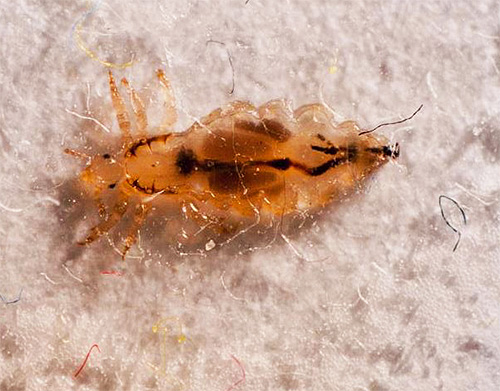
Clothes louse (Pediculus humanus corporis) is a subspecies of the well-known human louse. The clothes louse was singled out as a separate subspecies for the reason that for about 72 thousand years of cohabitation with a person, it adapted to living not on the scalp, which is typical for a simple human louse, but on clothes that a person does not part with for almost his entire life. civilized history. At the same time, for such a relatively short period by evolutionary standards, linen lice managed to develop adaptations in the structure of their bodies that make life easier for them in clothes, and they practically cannot live on a person’s head.
In the photo below - linen lice on clothes:
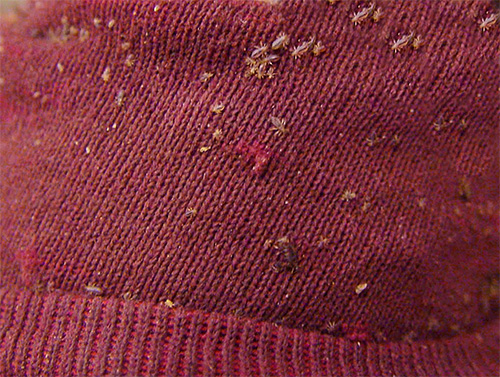
These lice are called linen lice because in most people they settle on underwear - from it it is easiest and fastest to get to the body as a source of food.
It is interesting
In rare cases, when both head and linen lice infect one person (this happens mainly in vagrants), they practically do not meet each other on the human body and do not interbreed.In the laboratory, when kept together, these parasites produce fertile offspring, which indicates their biological proximity.
Here are some more photos of linen lice:


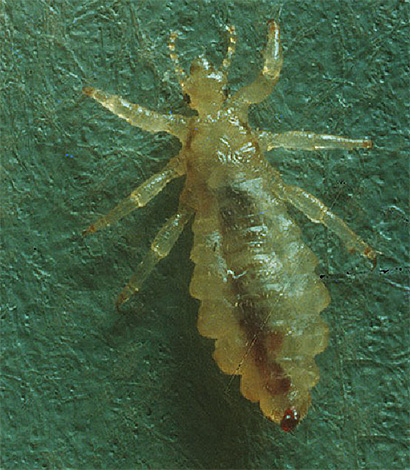
Linen louse is quite whimsical to environmental conditions and is dependent on a person's lifestyle. Knowing its main features, it is quite possible, even without the use of toxic agents, to remove linen lice in a fairly short time.
What linen lice look like: photos and videos
Linen lice look the same as head lice: they are small insects with a body length of about 2-3 mm, without wings, with an elongated abdomen. On closer inspection, along the edges of the louse's abdomen, you can see a small border of peculiar folds - they form when the insect's stomach is freed from the previous portion of food and the abdomen shrinks and wrinkles a little.
The photo shows a linen louse under a microscope:
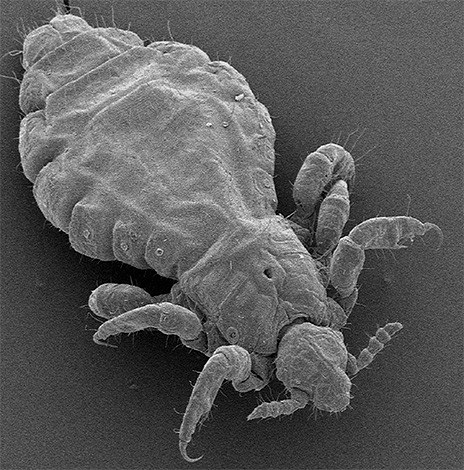
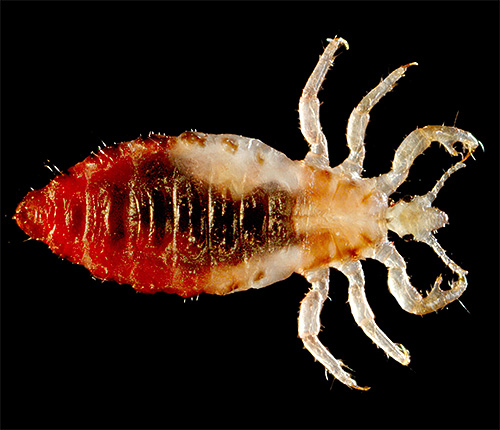
Outwardly, linen lice differ from head lice in the lighter color of the abdomen - they are almost white. Once satiated, due to the presence of blood in the digestive tract, the louse turns red or brown. Such a drop of blood in the louse's stomach can be seen in the photographs.

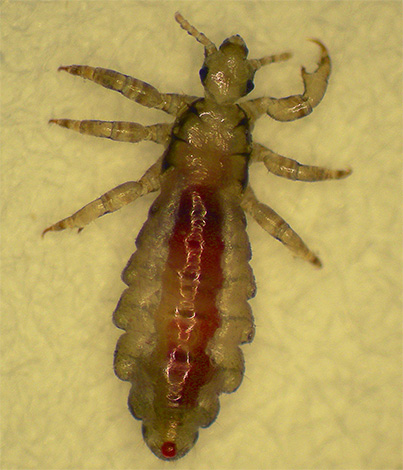
Linen lice larvae look the same as adult insects, but are somewhat smaller in size.
The photo below shows a whole small colony of lice on clothes:
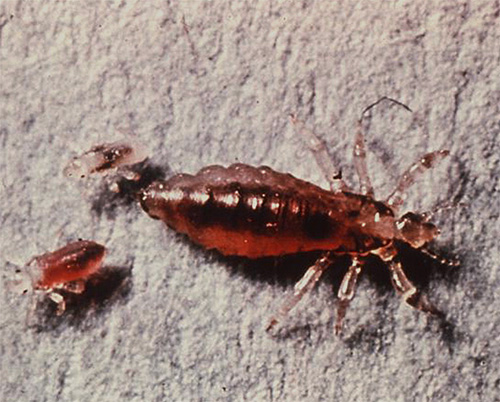
Nits of linen lice practically do not differ from head lice nits. However, they are found in completely different places - the female lays them between the seams of clothing, in folds, pockets, on folds where a person cannot reach the egg. It is almost impossible to find a nit without a magnifying glass or a portable microscope: it has a length of about half a millimeter, and it can be very difficult to see it on linen.
The photographs below show linen lice nits on clothes:
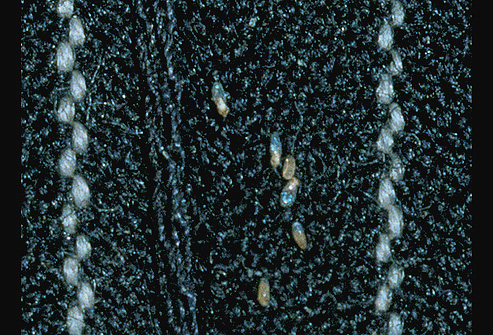
When accidentally encountered on clothes, linen lice look like small small insects with characteristic powerful paws in the front of the body.
On a note
A characteristic feature by which lice can be identified on clothes is their tendency to stay in groups. Alone, they can be found on the body, but in convenient places on linen, they usually gather in several individuals.
The photo below shows how linen lice look in such a group:

Where do linen lice live and what do they eat?
Linen lice spend most of their time on clothes. Here they rest, mate and lay their eggs. Only for feeding they move to human skin. Living on underwear, lice are located almost directly next to the body, and therefore such “voyages” do not present any difficulties for them.
And further: Just don't burn your hair - vinegar is really effective against lice and nits (the article has over 100 comments)
The only food for linen lice is human blood. For sucking, they pierce the skin with stylet-like outgrowths in the mouth and inject enzymes into the wound that reduce blood clotting.


On a note
It is the enzymes in the saliva of lice that cause allergic reactions to parasites in some people. And in most of those bitten because of these enzymes, bluish spots appear at the bite sites.
Linen lice can survive in a fairly wide temperature range. Adult lice remain viable at temperatures from 0°C to +45°C, and nymphs - from +5°C to +40°C. The optimum temperature for the reproduction of lice is 31-32°C.If clothing is removed from time to time and it cools, insects may experience brief slowdowns in physical activity.
Linen lice love moist air. At low humidity, they die already at temperatures below +5°C and above +40°C.
An adult linen louse lives about 32-46 days. At low temperatures, the life cycle of parasites is extended, and the lice become smaller.
Each linen louse feeds 4-5 times a day, drinking about half a milligram of blood at a time.

It is interesting
Lice crawl at a speed of about 15-30 cm per minute. If there are a lot of them on linen and a person, they can spread from him along the bed and furniture.
Bed lice bites are most common on the hairless upper body, buttocks and thighs. Linen lice rarely bite in the groin, and almost never on the head. Due to this localization of bed lice bites, they are often confused with bed bug bites.
In the photo - bites of linen lice in humans:
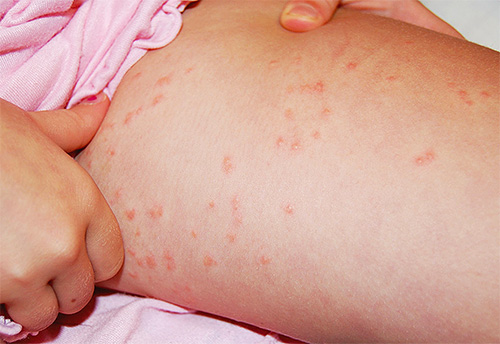
Most often, lice live on the clothes of vagrants and people who do not change clothes for months. So under the clothes ideal conditions are created for the reproduction of parasites.
At the same time, one-time washing of linen does not destroy lice - they can survive in water for two days. But even with a regular change of underwear, lice can infect a wardrobe and bite a person as far as possible. In this case, they will multiply more slowly, but they will not die if a person wears infected things at least once every few days.
Lice do not settle on bed linen and pillows. Meeting with them here is a rare accident (therefore, there are no such parasites as bed lice, but there are bed bugs, the small larvae of which are sometimes mistakenly confused with lice).
What is the difference between linen lice and other human parasites
Linen lice are easy to distinguish from other parasites:
- They differ from fleas by their light coloration and inability to jump. In addition, fleas rarely bite under clothing.
- Lice themselves differ from bedbugs in much smaller sizes and lighter colors. In addition, bedbugs bite a person only at night, while lice pester him all day while he is dressed.
- Lice can be distinguished from mites by their light coloration and coloniality - mites are rarely found in groups. In addition, ticks have 8 legs, while lice have only 6.
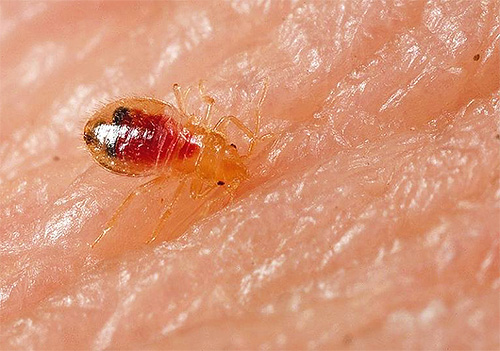

In practice, it can be quite difficult to distinguish a body lice from a head louse. But the pubic louse is very different: this parasite has a short and wide abdomen, resembling a microscopic crab in general (see photo):
And further: It's time to finally get those annoying nits out of your hair (the article has over 100 comments)
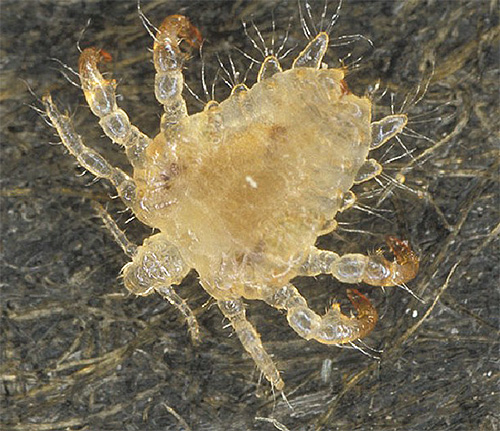
Diseases carried by linen lice
Clothes (or linen) lice are the most dangerous among all their relatives. Clothes pediculosis is characterized by numerous lesions of the body, more frequent and acute allergic reactions, a higher incidence of complications in the form of ulcers and pyoderma. This is largely due to the fact that body lice are most often found in vagrants who do not take any measures to get rid of them and improve their physical condition, strongly trigger pediculosis itself and often infect combs with infections.

By themselves, parasite bites cause severe itching and often lead to allergic rashes throughout the body. According to individual observations, in children they cause mood changes and constant irritability.
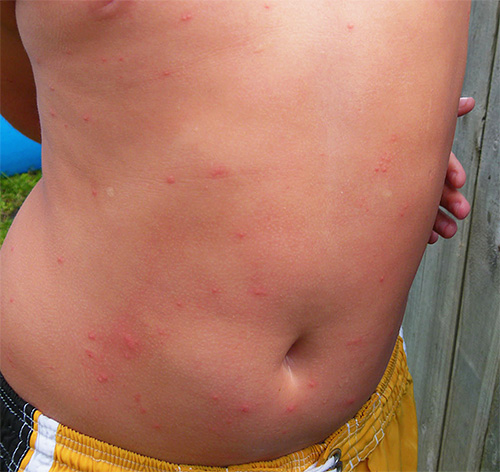
Linen louse most often among other types of lice carries pathogens of typhus - typhus and relapsing - as well as Volyn fever. It is because of her that soldiers died during both world wars, and it is she who spreads these diseases today among the population of Asia and Africa.
Reproduction of linen lice
Linen louse refers to insects with incomplete transformation: its larvae are similar to adults and differ only in size and underdevelopment of the reproductive system. Such larvae are called nymphs, they also feed on human blood.
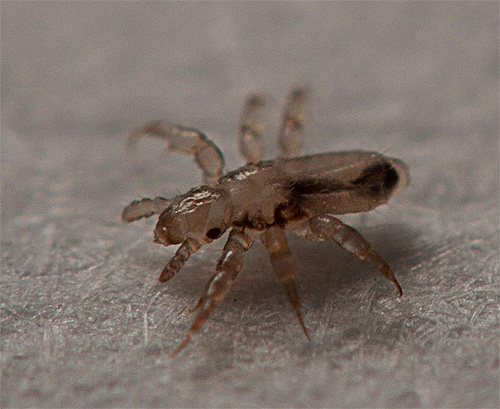
The female louse lives 35-45 days, the male - a little less. During her life, the female lays from 100 to 140 eggs, about 3-4 eggs per day (they are called nits). The incubation period of lice eggs with a constant presence near the human body at a temperature of about 32 ° C is about 5 days. If the clothes are removed, then the development of eggs stops during cooling and resumes with the next heating. So the development of the egg can last up to 2 months.
After leaving the egg, the larva sucks blood once, molts and turns into a nymph of the first age. Its development lasts 5-6 days, after which the next molt occurs, the next - after another 8-9 days, and after the third molt the nymph turns into an adult insect.

Under optimal conditions, the insect cycles from egg to egg in 16 days. In two months, the number of parasites on clothes can increase hundreds of times.
How do linen lice spread and what should be done to avoid picking them up?
Linen lice are transmitted from person to person in several ways:
- With bodily contact - hugs, kisses - in clothes.
- In crowded places - in the crowd, public transport, children's groups, moving from the clothes of one person to the clothes of another.
- When sharing clothes, the louse can remain on the body and then move to an uninfected T-shirt or shirt.
- When storing clothes together, lice move from one thing to another. This is dangerous spontaneous second-hand shops, where things are not processed.
- Very rarely - on the water. Linen lice can survive in water for up to 2 days and can move from an infected person to a healthy one in a pool or natural body of water.
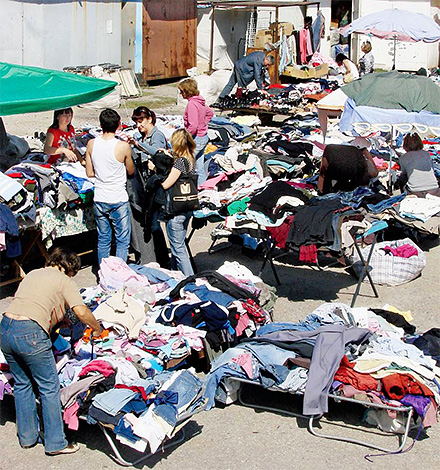
To prevent infection with linen lice, you should avoid places where declassed individuals may be present, carefully store clothes, and be careful in public transport. And most importantly, stay away from people who obviously do not follow the rules of hygiene.
What you need to know about lice to successfully get rid of them
Details about lice and nits: how the infection occurs and how to protect yourself

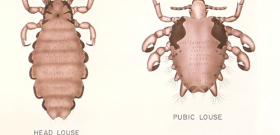
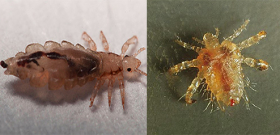
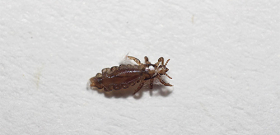
Hello! A week ago, my mother came to visit, slept with me and my son. I scratched all night, my son ran away to sleep with his dad for the first time in his life. From that day on, it became difficult to sleep in this bed. The child runs away, I itch not only in bed, but also during the day. There are no bites on the body, no matter how I look, no insects are visible. Just a sharp tingling, like a needle, more often in the area of \u200b\u200bthe ribs and on the legs. Everywhere they write that bedbugs are big, lice too. Maybe it's the larvae? Tell me what kind of species it can be and how to deal with it?
Christina, have you found out the cause of your scabies? I have the same symptoms. There are no insects visible, but I walk with red spots, as if from a mosquito bite.
Did you find the reason for everything?
bedbugs
Take all your clothes and wash them in bleach. And treat all the places where the lice lived.
Scabies, most likely.
Perhaps a clothes louse!
Try to sleep in the light, and when you feel a tingle - look.